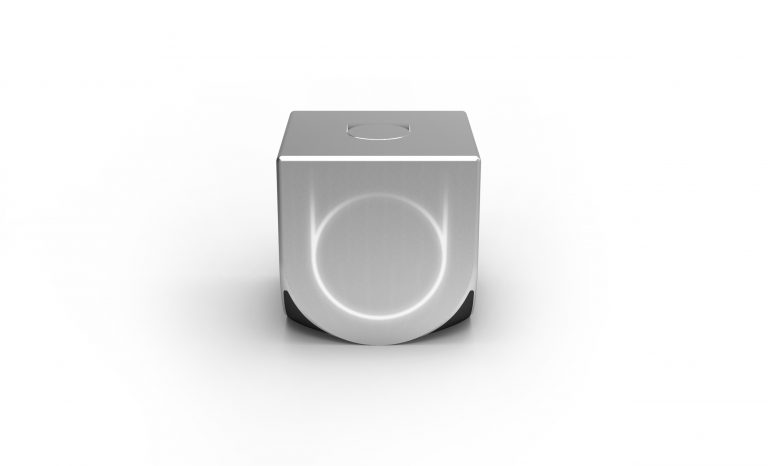While the retail launch of the Ouya isn’t until June 4th, the console is already in the hands of its Kickstarter backers and certain video game publications. The little box-that-could was pitched as an independent console platform, built to give a home to the indie game that couldn’t wait (or afford) to go through the rigorous process of certification for Valve, Microsoft, or Sony, and the player who was tired of being treated like a dollar sign by the aforementioned companies.
Ouya announced their Kickstarter project when the crowdfunding website was booming, having recently been verified as a legitimate source of funds (thanks to the Double Fine Adventure) and was still new enough that people were energized about the potential of the products backed. The Ouya still holds the second largest funds raised total with nearly $8.6 million. Expectations were high, but came with a plethora of unanswered questions. Even now the future of the console is still foggy.
The recent release of the Ouya into the wild has not gone over well. Reviews have been lackluster, as multiple sites have found problems with key features such as the controller, payment systems, and functionality. The biggest question that critics are asking is: What do I do with this thing? The Ouya was supposed to be about delivering games in an affordable, user-friendly package. However, while the Ouya’s roster is long, it is not overly impressive. Lacking applications or social functionality, the list of reasons to own the Ouya is not lengthy.
There were issues that should have raised red flags from the start, the most obvious being the Android system that powers the console. While mobile games have become an impressive staple in the video game industry, the best of the best most often hit the iOS platforms, then transition to Android devices. Successes like Ridiculous Fishing or Year Walk, the current highlights of 2013, are perfect examples of great games seeking an iOS install base, before Andriod. Furthermore, Ouya still has yet to get the affirmation that the market is interested in playing phone based games on their TV.
Ouya has also suffered from the unreasonable expectations of the Kickstarter delivery date. When the console was announced less than a year ago–July 10th, to be exact–it promised its backers they would be playing the Ouya by May of 2013. Time to alpha/beta test the system, run the market research, and then perfect the system was non-existent. It is this the exact excuse that the creators of the Ouya are currently using to respond to their poor reviews. However, the Kickstarter did not promise backers the opportunity to help beat test the console, as backers are paying the same amount–if not more–than regular consumers, they should be getting a finished product.
The majority of consoles have survived on one crucial element: games. A massive price dropped turned the 3DS into a handheld powerhouse, but the release of Mario Kart 7 and Super Mario 3D Land didn’t hurt; in fact, during the release of those games the 3DS sold over 8 million units. The WiiU and Vita have languished without sufficient software support. What are the games for the Ouya? As of right now, Wizorb, Final Fantasy III, and Saturday Morning RPG are the biggest ones available. The Ouya is missing an Uncharted, a Mario, a Halo, something that is instantly recognizable and only available on their system.
All of that being said, the Ouya’s fate is far from certain. The little Android box can still boast the unbeatable price of $99. While the current state of the system is less than impressive, it does not take much to turn such a price into a steal. Especially when you weigh the price against the Ouya’s open-box development upside. If the company can find a way to streamline the hackability of the console into an easy to use experience, the $99 box could find new life.
There is also a solid amount of support behind the Ouya. Kim Swift’s company, Airtight Games, has promised to release a game for the system. Add that to, such companies as Double Fine, who will be releasing their games, Broken Age and The Cave, and Polytron’s Fez, you start to get a decent list of developers. If the Ouya can gain some traction and indie developers with this much clout see it as a viable platform, it could become a much desired alternative to the more tedious worlds of Steam Greenlight and Xbox Live Arcade.
The Ouya is a brave and ambitious project. One that, despite a lukewarm reception, really does have a chance to succeed. An install base of 60,000 players, with limited games at their disposal, could be quite appealing to an independent developer looking for a quick way to get their game out. The Super Nintendo and N64 emulators open the system to retro fans who are looking for an easy way to play their favorite games of old. In order to really have legs, the system is going to need support. Developers playing the wait-and-see game, will need people to get out there and take a risk with their money on something that does not have praise, but has potential. This is the message we are continuing to hear and that all can agree upon. Whether it is the console’s critics or the makers themselves, all believe the Ouya has potential. The bad news is that, at this moment, potential is all the Ouya has.


0 Comments